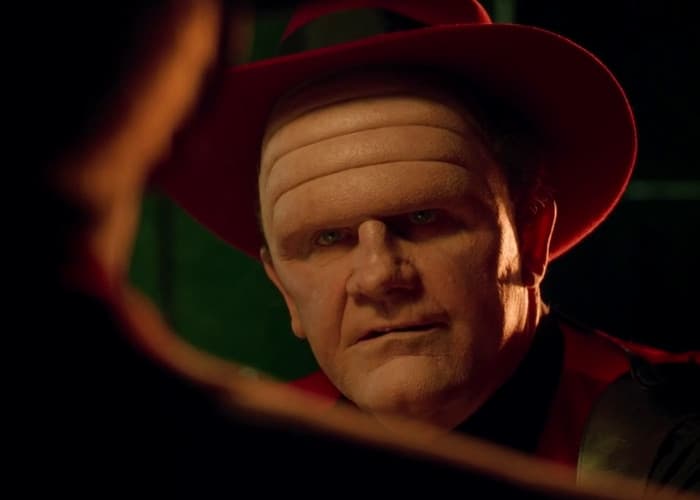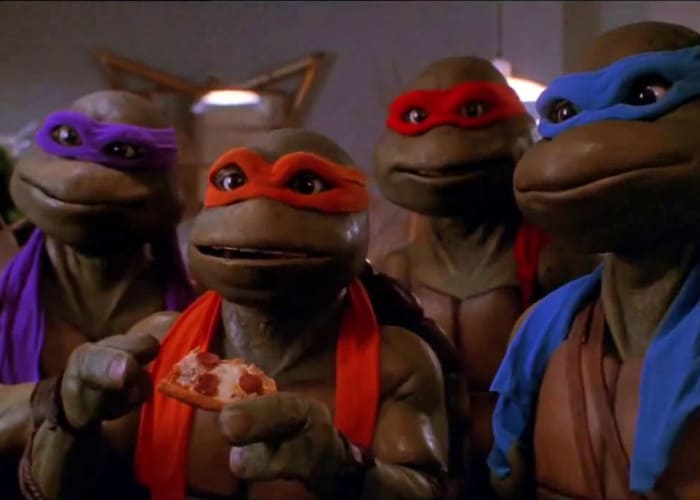From Ninja Turtles to Blade: The ’90s Radicalized Comic Book Movies
We traverse the last decade of apologetic comic book cinema year-by-year.

Before Tim Burton got goth with the Caped Crusader in 1989, superhero cinema was floundering in wonky Superman sequels, the misunderstood misfire of Howard the Duck, a couple of wretched Swamp Things, and…um…does Red Sonja count? Yes! It does! Oh. Damn. Well…Batman was a colossal success, grossing $411.5 million worldwide on a production budget of $35 million. Most of the 1990s were spent attempting to replicate its financial achievement, and the outcome was a slew of wannabes and a few radical outliers that built the base of the Marvel Cinematic Universe.
Considering the comic book films at-bat after Burton, I’m much more interested in the mighty swings than the inevitable whiffs. You see a lot of executives that don’t quite understand the material they’re adapting, or worst yet, seemingly have a condescending contempt for the medium. Still, several titles stand out, and under the lens of history, they rise above those that garnered more attention during their time. To understand and appreciate where we are now with comic book cinema, join me as I travel back year-by-year, and root threw the dirt to uncover the truffles.
1990

The first major comic book adaptation to follow Batman into theaters was Teenage Mutant Ninja Turtles. While several narrative elements were taken straight from the Kevin Eastman and Peter Laird comics, the main reason for its cinematic existence rested on the popularity of the Ninja Turtles cartoons as well as their lucrative action figures. While producers trusted its ability to secure box office — they would be proven correct as TMNT was the ninth-highest-grossing movie in the world in 1990 with over $200 million — the catastrophic release of Masters of the Universe dissuaded Walt Disney Pictures, Paramount, and Warner Bros. from distributing the film. New Line Cinema, the little studio that could, came to the rescue.
Disney also got in on the game with the Touchstone Pictures release of Dick Tracy. Director/star Warren Beatty wanted to bring Chester Gould’s comic strip characters to the screen since the mid-’70s, but it took Batman‘s success to get him the green light. I adore this flick. Beatty saw the abstract sets of Gotham City and was determined to top them with an astonishing color palate supplied by cinematographer Vittorio Storaro and the alien-like gangsters that populate the streets. While Dick Tracy knocked its opening weekend out of the park, it wasn’t the Batman-level blockbuster that Disney had wanted. Sequels were killed ruthlessly.
Sam Raimi’s Darkman is probably the best comic book movie of 1990 despite its lack of source material. The Evil Dead director was desperate to adapt the pulp hero The Shadow (someone else would get that miserable task later in the decade) and wouldn’t take no for an answer. Darkman is a hardboiled cartoon of a movie spearheaded by a manically intoxicating performance from Liam Neeson. Watching it and Raimi’s first Spider-Man back-to-back is a trip, exposing the origins of many wall-crawler camera angels.
The year closed out on a repulsive direct-to-video adaptation of Captain America starring J.D. Salinger’s kid, Matt. The film is only worthy of your time as a curiosity, and should not be treated as much more than that. While Marvel had some success on television, their cinematic achievements were far, far, far into the future.
1991

With the smash that was Teenage Mutant Ninja Turtles, the sequel Teenage Mutant Ninja Turtles II: The Secret of the Ooze quickly followed. This movie is less good. Two words: Ninja Rap. Vanilla Ice cannot save a much more juvenile script from dragging the characters into humorless shinanigans with a pair of infant animal antagonists. Tokka and Rahzar are a feeble attempt at Shredder henchmen Bebop and Rocksteady who were denied entry due to a licensing dispute between Eastman, Laird, and the producers of the television series. The final product has more shine to it than the original, but in its desire to score more kiddie dollars, whatever odd originality that was there is mashed down into another bland Saturday morning cartoon.
After the lackluster success of Dick Tracy, Disney took another stab at pulp action adventure with The Rocketeer. Sadly, the film crashed and burned. Based on Dave Stevens’ retro comic book series, The Rocketeer joyously mixes World War II espionage, gangster lore, and aeronautics history into a thrilling superhero origin story that spikes all the same pleasure centers as Indiana Jones. If we’re going to label one comic book movie of the ’90s as the purest, The Rocketeer gets my vote.
The Addams Family movie owed more to the ’60s television series than it did the Charles Addams strips, but if we’re going to bother with the drudgery of The Secret of the Ooze, then we gotta highlight this exceptional spin from Barry Sonnenfeld. The entire cast feels resurrected from the black and white boob tube but still somehow manages not to drown out the personalities of the performers. The plot is a touch rote, but the sequel would take the characters to their proper potential.
The only two other films deserving mention are a couple of manga adaptations: The Guyver and Riki-Oh: The Story of Riki. One is a cheap sci-fi bore with a Mark Hamill guest-appearance, and the other is the most gloriously bat-shit and gory prison film you could possibly imagine. Invite some friends over, munch on some popcorn, and enjoy the skull-crushing violence.

